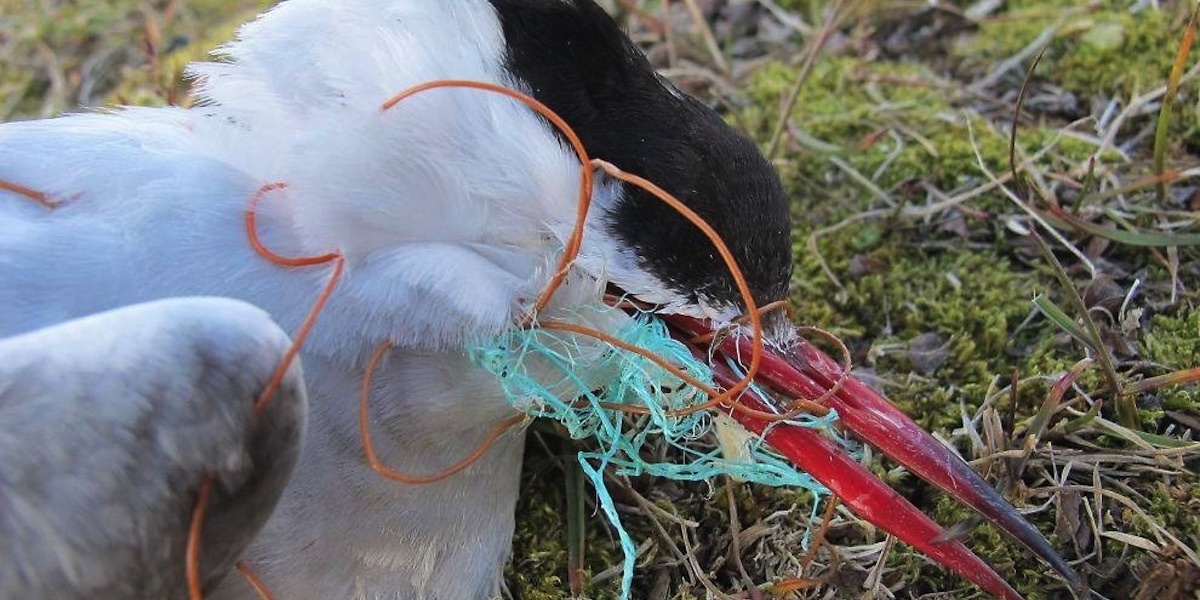
‘Plastic in All Sizes’ Found Everywhere in Once Pristine European Arctic

An Arctic tern entangled in fishing gear. Governor of Svalbard / Norwegian Polar Institute Facebook
A disturbing amount of
plastic is building up in the once-pristine European Arctic.
According to a
study from the Norwegian Polar Institute, “plastic in all sizes” can be found throughout the Norwegian Arctic and in the Svalbard islands, an archipelago between Norway’s mainland and the North Pole that’s also one of Earth’s northernmost inhabited areas.
The researchers estimated that nearly 194 trash objects—mostly plastic—can be found per square kilometer in the region, and weighs a total of 79,000 tonnes.
As ABC.net reported from the study, “even in remote areas with relatively low human impact, it says the concentration of plastic waste in the European Arctic is now comparable or even higher than in more urban and populated areas.”
The researchers are most concerned about the amount of microplastics in the sea, said scientist Ingeborg G. Hallanger, who is urging for more research on the effects of plastics on the area’s wildlife.
“We lack knowledge about the effects on animals. Here we have to research more,” she said. “But we know that as much as 90 percent of seabirds have a plastic in the stomach. 22.5 percent of the seahorses have more than 0.1 gram of plastic in the stomach.”
“We know that animals confuse the microplastic with food and eat it,” added Hallanger. “This can cause internal damage. We also see that animals get stuck in plastic thrown into nature; such as fishing nets and other plastic residues.”
Geir Wing Gabrielsen, one of the paper’s authors, told BBC News that the fulmar, an Arctic seabird, is particularly impacted.
“At the end of the 1970s we found very few plastic in their stomachs. In 2013 when we last investigated, some had more than 200 pieces of plastic in their stomachs,” he said.
Larger animals are also being harmed by the litter. “Other creatures are getting entangled in nets washed up on beaches—like reindeer,” Gabrielsen continued. “Some die because they can’t release their antlers—we find them every year.”
Gabrielsen said that in Svalbard, 80 percent of the waste comes from discarded fishing gear.
“The results are disturbing,” said Climate and Environment Minister Ola Elvestuen. “It is important that we get the fisheries, aquaculture industry and shipping industry on this. We also need to get control of microplastic that comes from artificial turf and car tires.”
Worryingly, the researchers predict that the amount of plastic in the Arctic regions will only increase. In 2015, global plastic production reached 322 million tonnes and will continue to grow.
The BBC aired a segment showing how Norway’s plastic flood comes from all over Europe and even from across the Atlantic.
“I mean you can throw a thing from the ocean in Florida and think, ‘Hey, I’ve thrown it away’ and then it might end up here on our shores,” as Bo Eide, an environment consultant for Tromsø Council who often conducts litter pickups on the Arctic fjords, says in the clip below. “They rather quickly break down into small pieces and even tiny little fibers.”
“I think the coastline as a whole … you can characterize it as a microplastic factory,” he sighed. “It’s so obvious that what we are doing here is the tip of the tip of the iceberg.”
Watch here to see the scale of plastic contamination:
Plastic pollution is reaching record levels in the once pristine Arctic. pic.twitter.com/6vsklnUYpZ
— BBC (@BBC) February 9, 2018

 233k
233k  41k
41k  Subscribe
Subscribe 